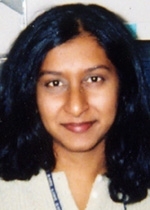When I arrived at MIT, I wore the label "pre-med" like a used lab coat--it fit well enough, but I never believed it was mine. Sure, I liked my pre-med classes and I knew my family would love a Dr. Reddy, but my heart wasn't in it.
Then I graduated and took a job working with patients in a hospital. After a few months of going home and babbling to my roommates about everything I saw at the hospital, I knew I was ready to apply. I was accepted at New York University School of Medicine and will matriculate there this summer.
For anyone interested in medical school, I have some suggestions.
Be sure you want to go. Shadowing a physician or spending a day with a nurse manager on a hospital floor will tell you if one night on labor and delivery is enough or if you are itching to learn and see more.
I found shadowing opportunities through MIT resources. The Externship Program over IAP matched me up with a psychiatrist, and my pre-med adviser gave me the name of a pediatrician in Cambridge. The MIT Careers Office has a program to match MIT students with alumni/ae who are practicing physicians and available as mentors.
Time yourself. Some students know they want to begin their medical training immediately. I took a few years off after college, and a growing number of applicants are waiting. The application process takes a year, so factor in that amount of time when deciding what program or employment to pursue. If you take time off, do something that truly interests you, not what you think will get you into med school. Having a job you love will make for better interviews.
Where do you want to go? I narrowed down my list by researching schools based on criteria such as location, residency placements, diversity of student body and non-academic opportunities, and comparing them in a spreadsheet.
Line up your ducks. In a nutshell, the easiest way to get into medical school is to have good grades and MCAT scores (4.5+ GPA, 28+ MCAT), stellar recommendations, an original personal statement and meaty extracurricular activities. The Careers Office has many resources on the finer details of the application process. Make an appointment to organize your application file in the early spring of the year you plan to apply, at the very latest.
Interviewing. I'm not a strong interviewer. So to prepare, I did a few mock interviews at the Careers Office and with friends. The Careers Office has an excellent list of 30 common questions, some or all of which came up in each interview I had.
I had a ritual I performed to get ready for my interviews: I reviewed the school's web site; pulled out unique programs I liked and came up with a few specific questions about the school. The night before the interview, I reviewed my application and common interview questions. Remember, the interview is more than the school's chance to picture you as a physician--it's your chance to picture yourself in medical school.
Shivani Reddy, who starts medical school in August, earned the S.B. in chemistry in 2001 and is now a research assistant at Brigham and Women's Hospital in Boston.
A version of this article appeared in MIT Tech Talk on April 16, 2003.






